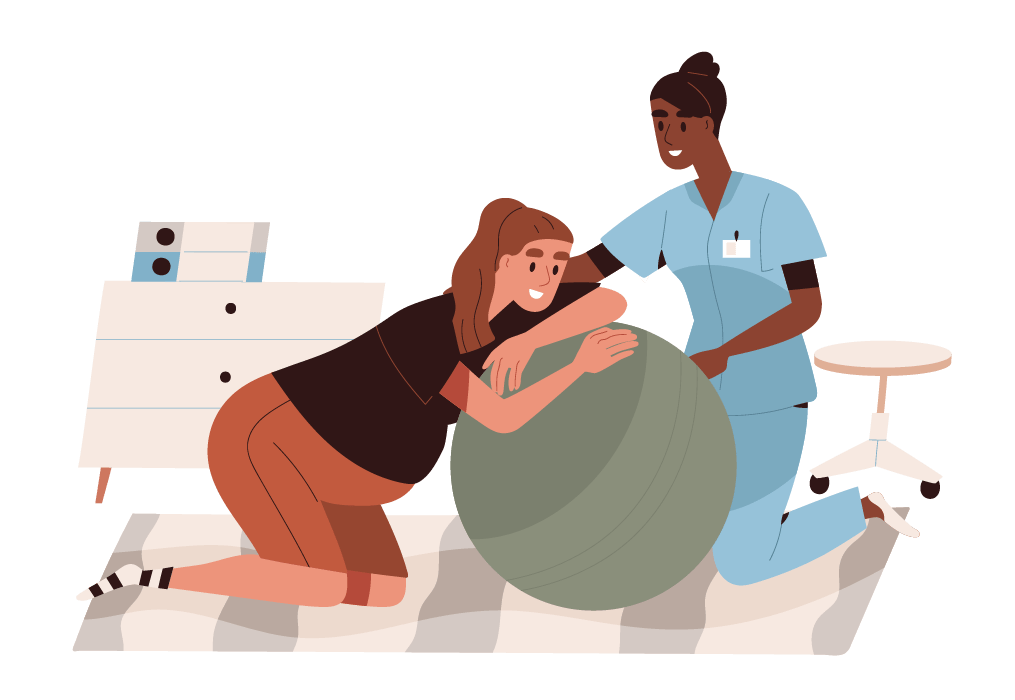Research Question Bank
Welcome to the Research Question Bank, where we collect ideas and calls for future research into physiological plateaus and healthy birth rhythms! Our vision is to have physiological plateaus recognised as a normal part of labour, resulting in positive policy and practice change. This is a big and global endeavour. To bring a real shift in maternity care, we will require sufficient and diverse scientific evidence of physiological plateaus – so, all hands on deck!
Have an idea for further research? Or looking for collaborators?
We would love to hear from you!
What to research?
Let’s dive into a wild collection of research needs…! This collection was informed by a doctoral dissertation of physiological plateaus (Weckend, 2023) but as research in this area intensifies, so does this collection grow and adapt. Please be part of our journey, share your own ideas if you like, and let’s spread the work across many shoulders….
We are big enthusiasts for transparency, shared endeavours and open collaboration. And you might feel the same. But we also understand if you prefer confidentiality around your research projects and plans. We will never share your research ideas and plans from personal communications here, unless you explicitly ask us to add something to the Research Question Bank. This platform is an effort to support global research activity and targeted research in this topic area. We believe the more, the merrier, and the sooner we can bring positive change in practice!
Whether you are a Bachelor’s student embarking on your very first research project, or a seasoned researcher looking for your next big challenge – let’s join together and make every research project count!
How do women experience physiological plateaus in labour?

This is a priority. Women and families are of course front and centre in all women’s health research endeavours, informing what we research, how we research it, and how findings are used to inform practice. No assumptions should be made about how women feel about physiological plateaus in labour, which terms women are comfortable with, and what women might want in such situations. Researching women’s experiences is equally important as investigating the ‘hard facts’ of the when, how, and why of birth physiology.
We already know
- women receive conflicting information about healthy labour rhythms
- some women perceive time-pressure during birth
We do not know yet
- when plateaus happen during labour, do women welcome this as a period of rest, or do women view this as an unwelcome delay?
- what terminology for physiological plateaus do women use and/or prefer?
We need
- qualitative and mixed-methods research exploring women’s experiences of physiological plateaus
- women’s advice on preferred terminology for plateaus
Current research investigating this (we always need more)
- WEPAUSE Study in Australia and Germany (2023 – 2025)
What is the prevalence of physiological plateaus?
We already know
- physiological plateaus seem to be common
- they appear more common or obvious in women birthing their first child
- they are typical on transfer from one setting to another
We do not know
- How prevalent are physiological plateaus overall?
- How often are physiological plateaus mistaken for labour dystocia?
We need
- large-scale quantitative data on the prevalence of (all types of) physiological plateaus in different populations, settings, and scenarios
- smaller (or sub-) studies investigating the prevalence of certain types of physiological plateaus (such as cervical reversal)
Current research investigating this (we always need more)
- PAUSEMATTERS Study in Australia (2024 – 2026)

At what times during labour do physiological plateaus occur?

We already know
- physiological plateaus are reported across the entire continuum of labour and birth (from labour onset through to the birth of the placenta)
We do not know
- it is not clear yet, if physiological plateaus occur more commonly at certain points during labour, or if evidence of such “sticking points” represents a reporting bias
We need
- research (various methods) to explore the timings of plateauing labour
- research that examines and challenges the theory of continuous labour progress as the only ‘normal’ labour pattern
How long do physiological plateaus during labour last?
This is a tricky one… Some indication on possible durations of physiological plateaus would be helpful, but such knowledge should not be used as a means to define a “maximum permitted duration” for plateaus, or else we are back to square one of time-based intrapartum care approaches. We are trying to get away from that! To be handled with care…
We already know
- physiological plateaus have various durations, typically from a few minutes to several hours
- some plateaus may last up to several days
- plateaus might be longer in women birthing their first child
We do not know
- we are unable to estimate the duration of plateaus due to the highly individual situations when (and why) they occur
- we have insufficient knowledge which factors affect the duration of plateaus
We need
- mixed-methods exploration of the duration of plateaus (in combination with influencing factors, such as parity etc., but not as a means to define “maximum permitted duration”)

Why do physiological plateaus occur?

We already know
- physiological plateaus have a diverse aetiology
- self-regulation of the baby and mother appear to be the primary causative factor for physiological plateaus (such as fetal and maternal adaptation)
- physiological plateaus can also happen in response to internal and external stimuli (such as maternal anxiety, or distractions in the birth space)
We do not know
- is the proposed differentiation of physiological plateaus into two aetiological groups (self-regulation vs. stimulus-induced) useful or not useful in practice
- it remains somewhat unclear what exactly is happening during physiological plateaus (such as at a structural and metabolic level)
We need
- qualitative and mixed-methods research exploring the biological function / purpose of physiological plateaus
- theoretical and applied research on the self-regulation of birth
- exploration of bio-chemical foundations of physiological plateaus (such as hormones, circadian rhythm, nervous system, neurotransmitters)
- research into how the mother and baby “communicate” during labour and birth (such as bio-chemical feedback loops, stress responses)
Do physiological plateaus influence birth outcomes?
We already know
- physiological plateaus self-resolve (by definition)
- labour accelerates following physiological plateaus
- women who experience plateaus during labour appear to have positive birth outcomes, including physiological birth and a healthy baby, but this is mostly limited to anecdotal and qualitative evidence
- there is ample indication that plateaus are misinterpreted as labour dystocia (to an unknown degree) and thus result in labour augmentation and medically expedited birth
We do not know
- it is unknown to which extent physiological plateaus might be misinterpreted as labour dystocia
- it remains unclear how physiological plateaus may affect birth outcomes for the mother and baby
We need
- quantitative and mixed-methods research on the outcomes of labour with physiological plateaus (in various birth settings)
- mixed-methods investigations of the extent to which physiological plateaus may be unnecessarily interfered with
Current research investigating this (we always need more)
- PAUSEMATTERS Study in Australia (2024 – 2026)

Already tackling some of these topics? Have an idea for further research?
Looking for advice or support for your student project?